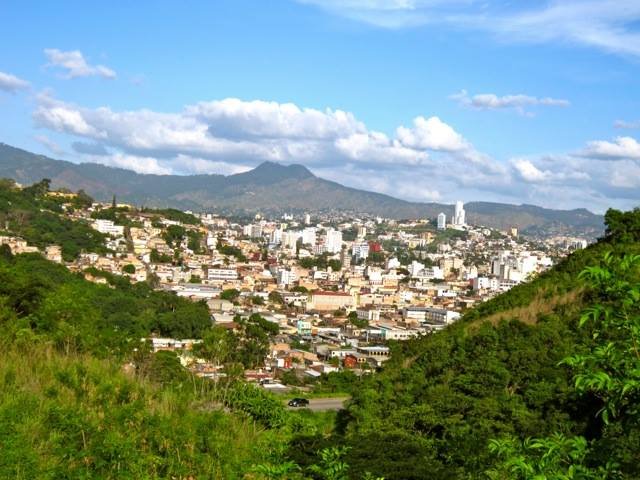
REFUGEE HEALTH CERTIFICATE
Module 6: Entrepreneurship and Social Entrepreneurship in Refugee Camps
Though charities and international aid organizations have been successful in supplying emergency relief to refugees, the short-term aid they provide does little to address the cycles of poverty that begin in refugee camps. Thus, social entrepreneurship projects are important in reducing refugees’ dependency on foreign aid and their ability to promote sustainable living.(1) Social entrepreneurship and microfinance are vital for improving the lives of the most vulnerable members of refugee camps. In addition to economic benefits, microfinance provides non-economic benefits to refugees as well. "Instead of being regarded as shiftless, destitute and dishonest they are given a psychological boost by being perceived as would-be-entrepreneurs worthy of trust.”(2) Even investing in one farmer can have positive effects that reverberate throughout society. For example, “even if only marginally successful, the farmer needs help at harvest time so that casual labor is taken on. When farmers have a profitable year, their first expenditure is home improvement. Materials and labor come from the village. As farmers climb out of subsistence production, they take other members of their village with them. Perhaps one of the most important effects on a small farmer having just a little money to spare is the apparently universal instinct to spend money on educating his children.”(3) Therefore, many community members benefit from an investment in one farmer.
Microfinance can also be critical to empowering women and bridging the gap between males and females. Women’s entrepreneurship development supports women to overcome social and economic barriers to start a business. These barriers are especially great in refugee settings because men have control over the very little resources that exist. Studies have indicated that it is critical for women to become the recipients of microfinance loans so that they may develop economic independence and protection.(4)
Social Entrepreneurship
Case Study #1: The Red Lion Bakery
Prior to fleeing The Gambia, a Sierra Leonean refugee was a successful baker. He did not have the funds or equipment to work as a baker at the refugee camp, but he eventually procured funds from a microfinance enterprise. He used these funds to purchase an oven and baking materials. As demand for his products increased within and outside of the camp, he hired and trained other refugees to work with him and created the Red Lion Bakery.(5)
Case Study # 2: Somali Refugees in Kakuma Refugee Camp
Members of the Somali community decided to start a microcredit system to aid groups of women in their business initiatives. After one group had repaid its debt, a space opened up for another group. This system was so effective that Somali leaders estimate that nearly 90% of their population in the camp no longer depend on UNHCR aid.(6)
Case Study #3: Pakistani Refugees and the Indian Bicycle Industry
Currently more than one third of the entrepreneurs in the cycling industry in Punjab are refugees from Pakistan. For example, the Munjal family started out by owning a small bicycle repair shop, then moved on to manufacturing cycle components, and then grew to operate a bicycle manufacturing unit. Bike manufacturing has been particularly successful for refugees because this type of industry is labor intensive and requires less initial startup capital than other industries. In addition, the government policies of the 1950s and 1960s helped these refugees gain the start-up capital needed by providing them with land compensations grants and loans.(7)
Case Study #4: Karrus Hayes
Karrus Hayes was a Liberian refugee who lived in Buduburam Refugee Camp in Ghana, and he recognized the need for children to go to school. Though he had no money, he received a loan of $50 and donated space, which he used to start the camp’s only free school. He now runs an organization called “Vision Awake” Africa for Development, which includes a community college, microfinance programs, and orphan assistance programs. Read more about social entrepreneurship and Karrus Hayes in the Social Entrepreneurship Course.
Barriers to the Implementation of Micro-Finance in Refugee Camps
Though microfinance has been successful in post-conflict situations, its implementation in refugee camps has been much more difficult. Oftentimes refugees are reluctant to set up businesses because they hope that they will soon return to their home country. Many microfinance organizations also lack expertise in the implementation of such programs in the refugee camp setting. In addition, though many programs have been deemed failures, this is based on the financial success of the program (repayment rates), and not on how the economic security of the community has improved overall.(8)
To ensure the success of microfinance in refugee camps, staff must be qualified, have the technical expertise, and be committed to investing the necessary resources. The field staff and finance staff must also work together to assure that the reporting and monitoring is done correctly. Lastly, because of the inevitable restrictions and limitations of the refugee camp setting, microfinance programs in these settings should be evaluated creatively, and not only based on their repayment rates.(9)
Footnotes
(1) Rigterink, P. V., & Rogers, M. D. Doubling the Income of Africa’s Poorest Farmers.
(2) Macchiavello, M. (2004). Livelihoods strategies of urban refugees in Kampala. Forced Migration Review, 20, 26-27.
(3) Rigterink, P. V., & Rogers, M. D. Doubling the Income of Africa’s Poorest Farmers.
(4) International Labour Organization. (2005) “Livelihood and Employment Creation Women’s Entrepreneurship Development in Refugee Contexts” Geneva.
(5) Cavaglieri, S. (2008). Livelihoods & micro-finance in refugee camps. Master's thesis, University of Roma Italy.
(6) Jansen, B.J., “The Accidental City: Urbanisation in an East-African Refugee Camp.” Urban Agriculture Magazine. 21 (2009): 11-12.
(7) Singh, S. “Refugees as Entrepreneurs: The Case of the Indian Bicycle Industry.” Journal of Entrepreneurship 3.81 (1994)
(8) Ibid.
(9) Phillips, J. “Challenges to the Effective Implementation of Microfinance Programmes in Refugee Settings.” Forced Migration Review 20 (2000).
